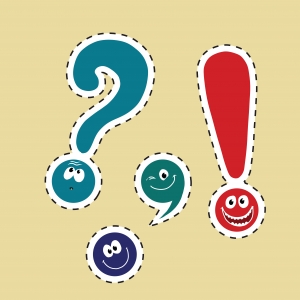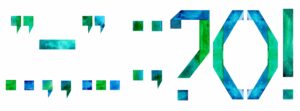In Marketing, Punctuation Matters — a Lot!
The best punctuation goes entirely unnoticed, even if it means breaking some rules, Sigl Creative reminds writers of marketing copy. The site offers a birds-eye view:
- Periods, exclamation points, and question marks symbols mark the end of a complete thought. Periods are used the most, and readers will barely notice them.
- Questions are great, drawing in the readers, posing a problem the reader wants solved.
- Exclamation points, not used in formal writing, are appropriate for copywriting. You’re excited about your business, and you want the reader to be, too. (Don’t use too many, and never two in a row.)
- Fragments (“Just. Like. This.”) break up the flow of words.
- Em dashes (which interrupt a sentence with an idea) can be visually exciting.
- Ellipses (a series of three periods) add informality, mimicking human speech.
But do these details matter? Oh, yes! “You don’t want to distract your readers from the message you’re trying to send,” Jessica Perkins of Agility PR Solutions writes. Without proper punctuation, you can produce run-on sentences, dangling modifiers, or sentence fragments.
It’s not hard to find websites listing funny examples of how punctuation can lead to total misunderstanding, as I pointed out five years ago in this Say It For You blog:
- A woman without her man is nothing.
A woman: without her, man is nothing. - Let’s eat Grandma.
Let’s eat, Grandma!
- I have only twenty-five dollar bills.
I have only twenty five-dollar bills.
- I’m sorry I love you.
I’m sorry; I love you.
- The author finds inspiration in cooking her family and her dog.
The author finds inspiration in cooking, her family, and her dog.
Anything that puzzles readers interferes with their interest and engagement, defeating the purpose of the content. In today’s competitive business world, content writing is a tool for “getting personal” and earning trust. As writers, we need to help our business owners express who and what they are, so that they come across as “real”. Being real, though, doesn’t mean being sloppy.
In marketing, punctuation matters – a lot!




Follow us online!